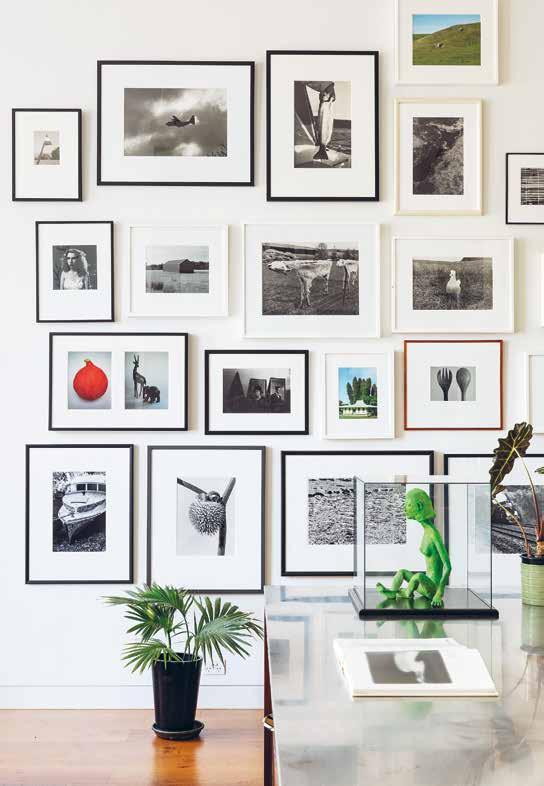




Art + Object March 4, 2025
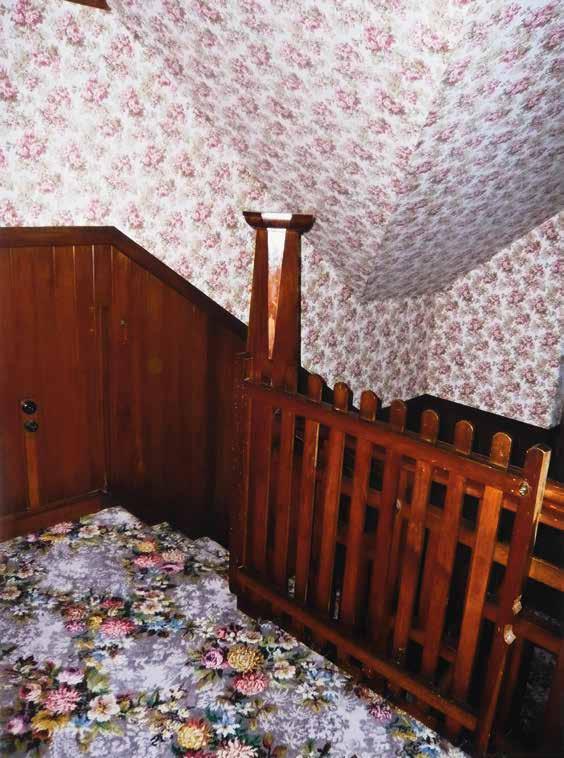
This interview originally appeared in Art New Zealand No. 8 in 1977–1978. It is referred to in the magazine as an “informal conversation with the editors of Art New Zealand dealing with Peter Peryer’s approach to his photography.” It took place at a busy and successful time for the artist, with his work recently given international recognition by the inclusion of a portfolio of his work in the 1978 Creative Camera Yearbook. He had also just brought out two limitededition portfolios, Gone Home and Mars Hotel; and had one-person exhibitions at Snaps Gallery and Peter Webb Galleries in 1976, at The Dowse Gallery, Lower Hutt, in 1977, and appeared in the seminal group show The Active Eye, at the Manawatu Art Gallery, in 1975. His photographs were also included in a three-person exhibition at New Zealand House, London, in the middle of 1978.
Art New Zealand: How do you see photography as an art in relation to other visual arts – to painting for instance. Many people think of a painter as someone who creates an image, who invents an image, as contrasted with the photographer, who seems to find his motif, in away, ready-made, already there?
Peter Peryer: The ‘invention’ of an image is, in fact, something that is particularly important in my work –especially in my more recent work. I may take a long time in setting up an image. last year I spent a few days on the set while they were filming Sleeping Dogs and I was struck by the extent to which film-makers go to set up a take. It made me realise how cautious I was as a photographer. Incidentally, since then, several people have said that my work looks like stills from a movie.
So you approach your subject with a lot of caution – you think about it for a long time before you take the shot?
Yes. With my portraits I usually spend a long time thinking about the clothes I want worn, the backgrounds, where I want the subject to stand. In the last few months all of my work has been portraits.
Let’s talk about your portraits then. Are they generally of someone you know. quite well – like those of your wife Erika.
No. Not always. On several occasions they have been people I have seen around the city. With Christine for instance [illustrated below].She was not someone I had known. In general I would make the approach – and then spend a lot of time planning the picture. I think there is amongst photographers a kind of resistance to the idea of photographs being premeditated. My photographs are not spontaneous. They’re not ‘snaps’. They’re not ‘moments’.
Can you tell us about any particular photographs that exemplify this studied quality?
Well, take the recent self-portrait of me holding a rooster. That picture had been on my mind I suppose for two or three months. I had to find the rooster; I had to find the right wall, I had to find the right clothes... With the colour polaroid of me holding a fish – the one that was in the Dowse Gallery exhibition took days to work it out: but Anne Noble and I got the picture in the first shot. What this means, too, in practical terms is that I photograph very little. I’m thinking about photographs all the time of course.
It has been mentioned in several places that some of your best images have been made with a toy camera – a camera made in Hong Kong. What led you to use this, and how did the experience of using it work out in practice?
One advantage of using this camera, the ‘Diana’ camera, strangely enough, was that it had very few controls. There was no way in which I could alter the shutter speed. There was no way in which I could alter
the aperture. All I could adjust (in a very primitive way) was the focussing. And I found it was quite different to photograph and be free from all those controls... it seemed to help me to loosen up.
Did it lead you towards any particular subjects?
Yes. Because it tends to give a rather dark, sombre sort of image, I chose subjects which really were appropriate to it. It gives a very ill-defined image too: so that the whole thing becomes impressionistic. But I’m not really quite sure whether I chose those particular subjects because I had that camera, or whether I chose the camera because I was feeling like taking pictures of that sort at the time. The sixteen images making up the portfolios of Mars Hotel and Gone Home came out of it and they were taken over a period of two or three weeks. A characteristic of the camera is that it tends to produce a darkening away toward the edges, putting the light in the centre of the picture. I haven’t used that camera now for about fifteen months. Curiously though, my recent pictures, which have been taken with a very expensive Rollei flex, often seem to have a similar picture quality.
Can you describe the process that leads you to your subject-matter?
I’m really not sure what’s going on as far as my subjectmatter is concerned. It’s an exploration of some kind. It’s the teasing out of certain issues that recur in my work. It doesn’t happen at a conscious level. They are in a sense like something remembered. It’s a curious thing that my recent pictures often don’t look like New Zealand, 1978. They look as if they have been taken in another country at another time.
Are you consciously influenced by other photographers?
No, not consciously. I’m as likely to be influenced by painters as by photographers. For example, currently I have strong feelings of affinity with the paintings of Lucien Freud. Maybe it is more a question of affinities than of influences. I admire Colin McCahon’s work
enormously. I was really encouraged when Peter McLeavey, his dealer, bought my portfolio Mars Hotel and gave it to McCahon as a present. There are two or three New Zealand photographers who I particularly admire – Richard Collins for instance.
You don’t tend to approach the subject because it has any specific ‘literary’ or social connotations?
No. There’s no message. All my photography is a kind of self exploration. But that doesn’t mean to say that all my pictures are necessarily ‘self portraits’. On one hand they are, certainly: but the pictures I take of people still do contain some truth about them. A truth, perhaps, with which I empathise. People sometimes say about my works that they are all basically ‘self portraits’. But I believe that’s only half-true. My photographs may be portraits of my own self – or of another self.
How did you begin in photography? How did you come to choose it as a medium of self-expression or selfknowledge?
I had been surrounded by photographs all my life. My father always had a dark room. The unfortunate thing was: he was very much into the Camera Club movement. I had never seen a photograph that really excited me until about three or four years ago. And that was one by Edward Weston, Civil Defence 1942 that was shown to me by John Turner. I think the key problem with photography in New Zealand in the past has been our lack of access to good photographs. Over the last three or four years things have really improved.
This has largely been the result of the work done by John Turner – the photographic exhibitions, Photo Forum, and so on?
Oh yes, I think John Turner has done it almost singlehanded.
When we were talking earlier on about what new work you had done since the Dowse Gallery exhibition you
seemed to be having quite strong reactions to the question. Why was that?
Just because the technique of photography appears simple, people seem to think that one should be able to produce a greater number of good works. I get this all the time. I think the fact is that no matter what medium one is working in, the gestation period between important works is going to be the same. In two months I have only produced one picture I’m really satisfied with.
Do you have any special views about exhibitions of photography in general? How important do you think it is to have exhibitions of photography?
Photographs have the ability to be reproduced ad infinitum with no loss of quality. This seems to me to be an enormous advantage that photography has over other media. Photographers don›t need exhibitions to the same degree as do painters and sculptors for instance. It seems to me that as photographers we still have to learn how to take full advantage of this strength.
What do you feel are the implications of being a photographer in New Zealand – an artist in New Zealand?
As a New Zealander I find it hard to believe that I can do anything important on a world scale. Quite unconsciously I’ve picked up a strong feeling of racial inferiority. Sometimes I have to give myself a lot of reassurance that working as an artist is a worthwhile way to spend one’s life. And as a photographer I have at times found it painful to know that many people don’t look upon photography as having a legitimate place in the art world. Fortunately this attitude is in its dying phases.
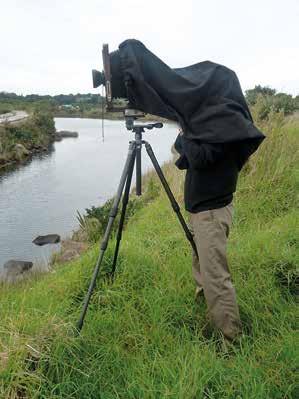
Peter Peryer
Laurence Aberhart, Waitara 2010
A collection of Peter Peryer photographs demonstrates that the individual images contribute to a holistic experience of a uniquely lived and witnessed world. Spanning four decades of astute observation, Peryer’s worldmaking is built fundamentally on noticing the things around him. These things are always filtered through an awareness of how people, landscapes and artefacts translate through the photographic medium. His visual language is a knowing blend of modernist abstraction, textural expressionism, and vernacular acuity. Commencing in the 1970s, Peryer’s practice bridges movements and trends in New Zealand’s photography histories. His enduring early work navigated the 1970s zeitgeist of essentialising nudes and moody landscapes (encapsulated in the important touring exhibition The Active Eye launched in 1975). Working beyond this period’s (naïve) expressive traits, Peryer developed a sustainable photographic language that relied on close observation: constructing images was as necessary to his photographic method as the discovery of subjects through travelling and everyday discovery.
An irreverently playful attitude towards subjects meant that Peryer would alter a scene to shape an impression/memory of that object and his sense of its place in the world. For example, the photographer swept the intersecting paths surrounding the raised flower bed in Frozen Flame (1982) before he ascended a ladder—seeking a view to exaggerate the diagonal composition while fragmenting the garden from a wider landscape. On another excursion, for New Zealand 15.3.1991 (1991), Peryer returned to a school playground with chalk in hand to touch up scratches on a painted map of Aotearoa: the purpose of ‘cleaning up’ the map was to support the very plausibility of an illusion of our country as if viewed from a distant satellite. A desire to alter, even manicure, potential subjects enfolded scenes and still lives within the artist’s unifying aesthetic. His coherent photographic style frequently identified the textural in subjects while building poetic connections between images across years of prolific production.
The importance of the local in these photos suggests a wry nationalist rhetoric. An understanding of Pākehā mythmaking is evident in Peryer’s relationship to whenua throughout his oeuvre. Photographs of land reference New Zealand art histories through subject choices and his titling of individual prints (including using the title Frozen Flame). No doubt a rural upbringing affected the
artist’s inquisitive relationship with land, animals, and death: we see interconnected motifs repeatedly across the decades, from the famous bloated cow in Dead Steer (1987) to the latter picture of trophy hides strung over a barbed wire fence in Two Goats (2007).
Shifting from analogue to digital technologies, Peryer remained enthralled by the possibilities of how the camera renders subjects into pictures. This enthusiasm for photographic processes and his dogged pursuit of transcribing the world through an idiosyncratic style was infectious. Peryer’s willingness to discuss photography and share his fascination with his favourite subjects was compelling. While in my second year of a Bachelor of Fine Arts degree at Elam School of Fine Arts, in 1988, Peryer visited the photography department to share anecdotes behind select photos (I would hear these stories again and again over the following years). Describing his approach to photography and reflections around individual images was uncomplicated for Peryer as a photographer, educator and entertainer. His willingness to frame pictures through the personal reflects a jocular yet empathetic worldmaking. A persistent relationship formed through a deep understanding of the importance of having a place to stand.
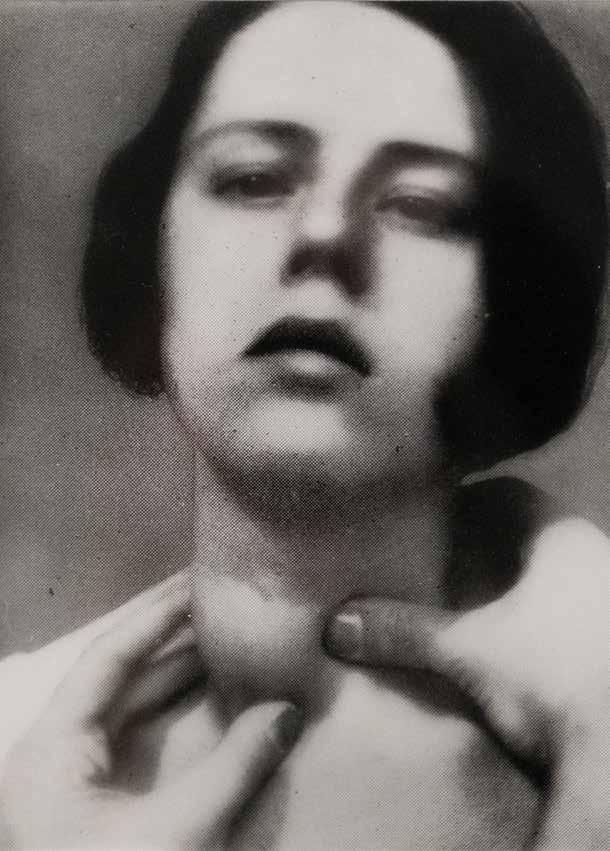

New Zealand photographer Peter Peryer died in 2018 aged seventy-seven. Four years earlier, critic Peter Ireland observed that Peryer’s curators and writers tend to be ‘baby boomers’, ‘born well before 1980’, and that ‘the Peryer orthodoxy’ is ‘now a period piece itself’.1 A new documentary, Peter Peryer: The Art of Seeing, seems to agree, wheeling out a procession of authoritative old white men (my friends) to explain the work.2 For them and me, who were there at the time, Peryer’s work will always be radioactive with significance. However, I find it hard to explain to millennials and to visitors to our shores why Peryer has been so important (to us) and why they might care. Perhaps, ultimately, his importance will be tied to his time and place.
If you didn’t know, Peter Peryer is a giant in New Zealand photography. He came to the medium late, in his early thirties, in the early 1970s. In New Zealand back then, photography was a separate scene, with its own gurus, spaces, and journal. It hadn’t yet merged with the art world proper. Peryer would play a key role in the campaign for it to be recognised as art—his work epitomising why it should be.
From the outset, Peryer was special. He began as an expressionist, making brooding portraits and haunted location studies. He often used a Diana camera, exploiting the toy device with its distorting plastic lens to imbue his subjects with angst. His portraits were mostly of women—especially his wife/muse Erika—and of himself.3 They were compared to passion plays and psychodrama —the ex-Catholic seemed to be working through stuff. Peryer’s work proved an overnight sensation. It was swiftly profiled in the local photography journal PhotoForum and in Britain’s 1978 Creative Camera Yearbook, and picked up for shows.
A change of heart in the early 1980s saw Peryer largely jettison portraiture and adopt a cooler, more formalist, ‘clinical’ approach. He went on to make still lifes, animal studies, botanical studies, location shots, landscapes. He explored New Zealand’s scenic vistas, tourist spots, and back blocks, its flora and fauna, and its cultural talismans, revelling in their settler-colonial ambience. But he also threw in odd shots from travels abroad (the Statue of Liberty at Denmark’s Legoland) His subjects ranged from nice (flowers) to nasty (a sheep carcass spilling its guts, the swastika on a V1 rocket). He didn’t work much in series, preferring to
generate singular images of singular subjects in odd treatments and sizes. His shows often felt like miscellanies.
Peryer’s work had a familiar, belated, nostalgic quality, keyed to photography as a memorialising medium. Much of it seemed concerned with the New Zealand of his childhood. With his early Diana-camera pictures, the déjà-vu aspect was emphasised by a soft-focus style, yet it persisted in his subsequent sharpfocus work. Peryer’s work was never avant-garde. It wasn’t about pioneering new ways of photographic seeing, but about revisiting earlier ones, both art and vernacular ones—the snapshot, pictorialism, scenic postcards, new objectivity, botanical photography, etcetera. There was seldom anything topical within his pictures to reveal that they had been taken only yesterday. Plus, Peryer typically presented them old-school style, as small, black-and-white prints in white mats, in frames. Their time-warped, secondhand, quotational quality found Peryer included in the 1989 show Imposing Narratives: Beyond the Documentary in Recent New Zealand Photography—not that he was remotely interested in postmodernism.4
Peryer was obsessive. He talked about his image making as if it were a grail quest. He was known for contriving his apparently found subjects: having a model bus built ( The Meccano Bus, 1994), tarting up a playground drawing (New Zealand, 1991), and killing a grin of possums before getting one with its tail just right (Trap, 1991). He had a knack for making his subjects his own. Curator Jim Barr famously observed that Christine Mathieson was nothing like Peryer’s 1977 portrait.5
A restless autodidact, Peryer juggled all manner of niche interests. A 1994 documentary finds him dripping ink into water to photograph the patterns.6 He said it was his second attempt to get the picture, having tried six to eight years earlier. No work eventuated because, I assume, the results didn’t satisfy him. But it was sometimes odd what did. While he produced stunning, iconic images, some pictures were deadpan, unremarkable thematically and formally, their only distinguishing feature being that he considered them worthy, leaving us scratching our heads.
While Peryer’s project was explicitly about the singular image, implicitly it was all about affinities and cross-references between
images. His work cultivated close readers attuned to his auteurism, to telltale resonances between pictures—rhymes in subject matter and treatment. Fans observed his penchant for patterns, aerial views, ambiguities of scale, phallic objects. Although Peryer admitted that he favoured certain ‘templates’, it all seemed hardwired. The insistent peculiarities of his way of seeing may have been a mystery to him too.
Accumulating over decades, Peryer’s work has become a mind map—a guide to (or stand-in for) the world and himself. Historian Peter Simpson called it ‘Peryerland’.7 In this secondhand universe, individual pictures operate like nodes in a mysterious implied emotional-energy field, leaving us to speculate on the precise and full nature of their interconnection. Some—shots of a satellite dish, a trig station, a power substation, a pylon, a radio mast, a racecourse observation tower—admit this, as visible pointers to invisible links.
Peryer spoke and wrote a lot about his individual works— particularly what attracted him to their subjects—while remaining oddly quiet about his overall approach, his art-world strategy, which made it seem like he didn’t have one. Yet this approach proved compelling. As much as Peryer griped about museums, their curators favoured him. His work was incorporated into diverse shows and arguments. In many ways, his ideal viewers were curator types, keen to find links, to join dots.
Despite enjoying international recognition, Peryer’s work was always a New Zealand thing. Not only are his subjects mostly from here, the work’s reception has been here. His project coevolved with its local audience, who became extremely familiar with the work, enabling the close reading it increasingly seemed to demand. Peryer fans looked forward to his latest ‘new picture’, for how it would elaborate on or derange their understanding of his oeuvre. Overseas, Peryer was another photographer; in New Zealand, he was a paradigm.
Peryer did things to stay current. In the twenty-first century, he abandoned the darkroom, preferring digital cameras and processes—even shooting pictures on his iPhone. He turned to colour and printed big. Nevertheless, his m.o. was grounded in an earlier time. Today—as we operate in a post-medium-art
moment, a digital-photography moment, a post-conceptualphotography moment, a wall-scale-photography moment—Peryer looks anachronistic. To my generation, his work was consciously quotational, subtly time warped, and faux naive, but, to new audiences, coming in cold, and with different expectations of photography, I fear it will look simply derivative, old, naive, with all nuance lost. I can’t see the uncanny compositional isomorphism of Peryer’s European Hare (2008) and his Camelia (2010) persisting as a burning issue for the culture.
*
Peryer once told me about a book idea—Peter Peryer’s Alphabet—reproducing twenty-six of his photos, one for each letter.8 A is for Alligator … But he lamented that he wasn’t ready yet. There were many candidates for some letters; for a few, nothing. He’d get there one day, he promised.
I loved the concept. It was accessible and gimmicky—the book could have been popular. It was also canny, foregrounding his desire to make his defining images of subjects. His work had come to feel like a personal dictionary or encyclopedia.
Everything that can be said can be said using twenty-six letters, but twenty-six photos will never be enough. While Peter Peryer’s Alphabet may have represented some goal of completion, it also pointed to the arbitrariness of making any finite group of images stand in for the world or the artist. But, I guess, Peryer considered the alphabet was as good a curatorial framing—or unframing— device as any.
The book concept stuck with me. I wanted it to happen. In later years, when I saw Peryer, I would raise it. ‘What happened to Peter Peryer’s Alphabet? Do you have all the images yet?’, I would ask. But Peryer would look at me nonplussed. He seemed to have forgotten it was his idea. He’d moved on.
Peryer’s gone now, so his Alphabet book will never happen and I can’t press him over it any more. Paradoxically, however, an oeuvre that seemed tantalisingly incomplete and always ‘becoming’ is now a closed book, and no one can enjoy it in quite the ways we did before. You had to be there. Sorry.
1. Peter Ireland, ‘Carving the Granite’, EyeContact, 8 September 2014, http://eyecontactsite.com.
2. Dir. Shirley Horrocks, Peter Peryer: The Art of Seeing, 2019. The film chooses Jim Barr, Luit Bieringa, Grant Kerr, John McCormack, Hamish McKay, Paul McNamara, and Peter Simpson as its art-world experts.
3. Back then, photographing your wife had a pedigree: Alfred Stieglitz with Georgia O’Keeffe, Harry Callahan with Eleanor, and Emmet Gowin with Edith.
4. Imposing Narratives: Beyond the Documentary in Recent New Zealand Photography, curated by Greg Burke, City Gallery Wellington, 1989.
5. ‘Peter Peryer’, Photo-Forum Supplement, Summer 1977–8, 13.
6. Dir. Greg Stitt, Peter Peryer: Portrait of a Photographer , 1994.
7. Peter Simpson, ‘Mapping Peryerland’, Peter Peryer: Photographer (Auckland: Auckland University Press, 2008), 105–31.
8. Not to be confused with Peryer’s 1980 Alphabet Series—shots of leaves, legs, and lilies.
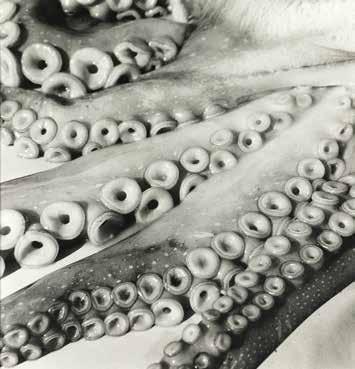

Consignments invited until March 7
cast bronze, signed and dated 2000
2450 x 1400 x 700mm
Provenance:

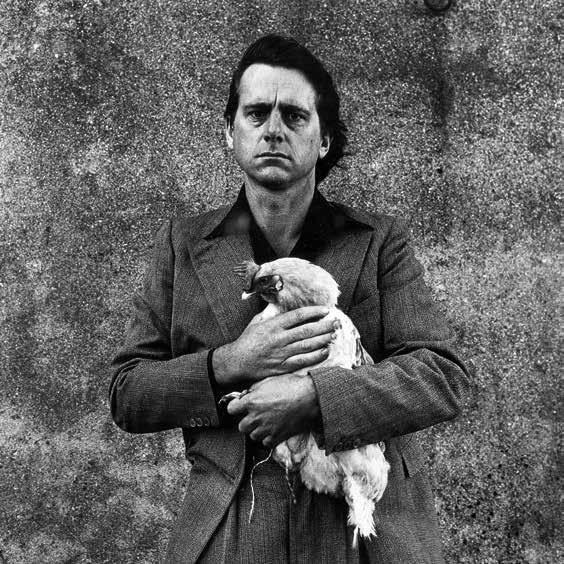
PREVIEW
Wednesday 26 February 5.00pm – 7.00pm
3 Abbey Street Newton, Auckland
FILM SCREENING
Peter Peryer: The Art of Seeing Saturday 1 March 3.00pm
3 Abbey Street Newton, Auckland
VIEWING
Thursday 27 February 9am – 5pm
Friday 28 February 9am – 5pm
Saturday 1 March 11am – 4pm
Sunday 2 March 11am – 4pm
Monday 3 March 9am – 5pm
Tuesday 4 March 9am – 2pm
AUCTION
Tuesday 4 March at 6.00pm
3 Abbey Street Newton, Auckland
FLOOR TALK
With collector Grant Kerr Sunday 2 March 3.00pm
3 Abbey Street Newton, Auckland
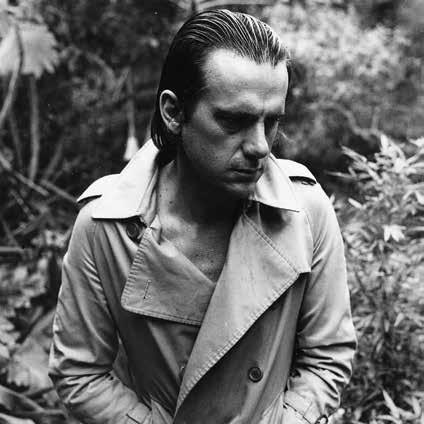
SPECIAL SCREENING
Saturday 1 March, 3.00pm at Art+Object
3 Abbey Street, Newton
“Utterly engaging. A perceptive and richly illustrated portrait of such a major visual artist.” (Bill Gosden, NZIFF)
“Shirley Horrocks’ invaluable documentary portraits of NZ artists have been a regular feature at the NZ International Film Festival for over two decades” (NZIFF)
COLLECTOR FLOOR TALK AND COLLECTION TOUR
Sunday 2 March, 3.00pm at Art+Object
3 Abbey Street, Newton

Join Art+Object Director Leigh Melville in conversation with collector Grant Kerr as they discuss all aspects of photography and collecting.
Kerr has been a lifelong collector, beginning with stamp collecting at eight years old before moving on to prints and paintings whilst a student at The University of Otago, and then, after meeting Peter Peryer in New Plymouth in 1990s, amassing one of the country’s most significant private collections of photographs.
The relationship between Kerr and Peryer is one of the great artist-patron relationships in contemporary New Zealand art and Kerr is uniquely placed to give fascinating insight into the eye and mind of one of New Zealand’s great artists.
Image: Peter Peryer, Portrait of Grant Kerr
The barn was in a paddock somewhere to the south of Martinborough, at the bottom of the North Island. I often look at barns around here in Taranaki there is no shortage. I am almost a connoisseur of barns. The one in the photo is one of the most perfect that I’ve ever seen. It sits there with such clarity. — Peter Peryer
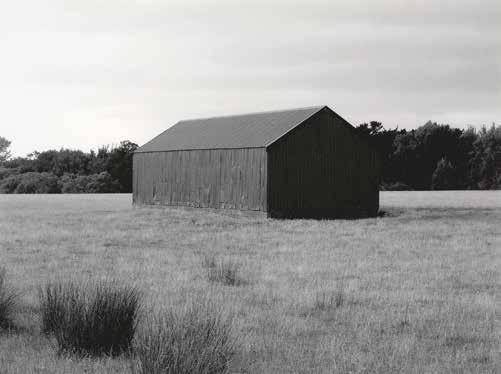
1
Peter Peryer
Barn
digital print, edition of 10 (2004) 247 x 328mm
Illustrated: Peter Simpson, Peter Peryer: Photographer (Auckland University Press, 2008), pl. 59.
Collection: An edition of this photograph is held in the Govett-Brewster Art Gallery, New Plymouth. $3000 – $5000
Peter Peryer
Whakarewarewa
gelatin silver print title inscribed and signed 1993 verso 340 x 515mm
Illustrated: Gregory Burke and Peter Weiermair, Second Nature: Peter Peryer, Photographer (Edition Stemmle, Zurich, 1995), pp. 120–121.
Lara Strongman (ed), Contemporary New Zealand Photographers (Auckland, 2005), p. 81.
Peter Simpson, Peter Peryer: Photographer (Auckland University Press, 2008), pl. 79.
Collection: An edition of this photograph is held in the Sarjeant Gallery Te Whare o Rehua, Whanganui.
$5000 – $8000
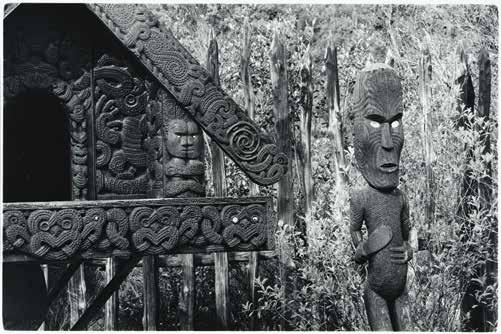

Peter Peryer Ruapehu
gelatin silver print
title inscribed, signed and dated 1988 verso; artist’s original collection label affixed verso
500 x 400mm
Collection: An edition of this photograph is held in the collection of the Sarjeant Gallery Te Whare o Rehua, Whanganui.
$4000 – $6000
Peter Peryer
Conus
digital print, 3/6 title inscribed, signed and dated 2007 verso 375 x 280mm
Illustrated: Peter Simpson, Peter Peryer: Photographer (Auckland University Press, 2008), pl. 40.
$2500 – $4000
I have been thinking about this photo for a few months, I have now decided that I am going to print up an edition. I am fond of this entire ‘Conus’ genus, or is it family, of shells. Found in various forms all over the Indo-Pacific region.
— Peter Peryer

Peter Peryer
Shell Study (Conus Litteratus) gelatin silver print (2001) 185 x 245mm
Illustrated: Peter Simpson, Peter Peryer: Photographer (Auckland University Press, 2008), pl. 19. $2500 – $4000

Marti Friedlander
Ruapekapeka
gold-toned vintage gelatin silver print (1970) signed in pencil on the mount
325 x 475mm
Illustrated: Leonard Bell, ‘Narratives of Loss and Hope: The Photographs of Marti Friedlander’, Art New Zealand, No. 99, Winter 2001.
Leonard Bell, Marti Friedlander (Auckland University Press, 2009), p. 86.
Collection: An edition of this photograph is held in the collection of Auckland Art Gallery Toi o Tāmaki.
$6000 – $10 000
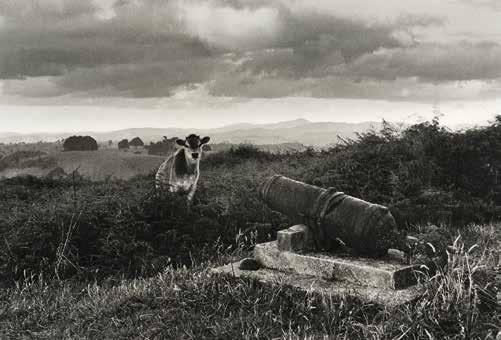
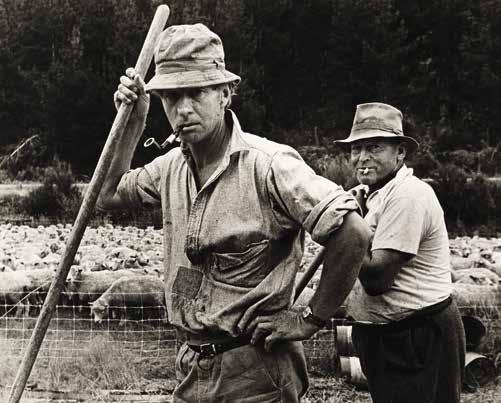
7
Marti Friedlander
Farmers, South Island
vintage gelatin silver print (1970)
original FHE Galleries label affixed verso
290 x 355mm
Collection: An edition of this photograph is held in the collection of the Museum of New Zealand
Te Papa Tongarewa (another version).
$6000 – $10 000
I’ve had this Dublin Bay rose growing in a pot outside for several years. It hasn’t grown much, its roots need more room but still, every year it produces several perfect blooms. Soon it will have its release. Last year, when I was making one of my frequent trips from Central Otago back to my studio in New Plymouth, I took this photo. — Peter Peryer
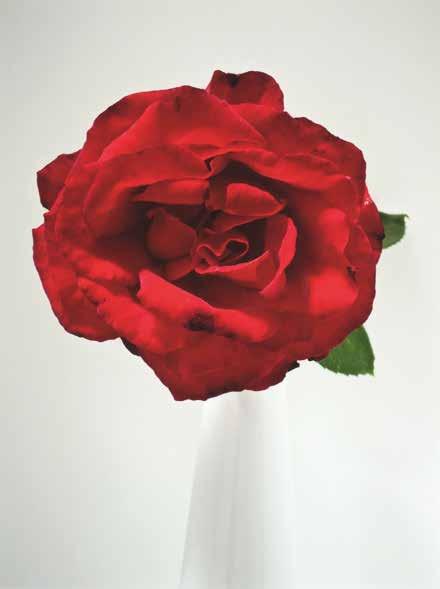
8
Peter Peryer Rose digital print, 1/10
title inscribed, signed and dated 2009 verso
450 x 340mm
Exhibited: ‘Peter Peryer: Colour’, Hamish McKay Gallery, Wellington, 13 August –3 September 2022.
$4000 – $7000

9
Peter Peryer
My Parents gelatin silver print (1979) 232 x 350mm
Illustrated: Gregory Burke and Peter Weiermair, Second Nature: Peter Peryer, Photographer (Edition Stemmle, Zurich, 1995), pp. 24–25. Mary Barr (ed), Headlands: Thinking Through New Zealand Art (Sydney, 1992), p. 46.
Exhibited: ‘Headlands: Thinking Through New Zealand Art’, Museum of Contemporary Art, Sydney, 1992 (touring New Zealand).
Collection: An edition of this photograph is held in the collection of the Museum of New Zealand Te Papa Tongarewa. $6000 – $9000
My photographs are self-portraits. The photographs are somehow related to my past. I don’t know why or how.
— Peter Peryer
Peter Peryer
The Meccano Bus gelatin silver print title inscribed, signed and dated 1994 verso 355 x 540mm
Illustrated: Gregory Burke and Peter Weiermair, Second Nature: Peter Peryer, Photographer (Edition Stemmle, Zurich, 1995), pl. 53. Peter Simpson, Peter Peryer: Photographer (Auckland University Press, 2008), pl. 15.
Collection: Editions of this print are held in the collection of the Museum of New Zealand Te Papa Tongarewa, Auckland Art Gallery
Toi o Tāmaki, Dunedin Public Art Gallery, and The National Gallery of Victoria, Australia.
$6000 – $10 000

Peter Peryer
Bluff
gelatin silver print
title inscribed, signed and dated 1985 verso 355 x 345mm
Illustrated: Francis Pound, Signatures of Place: Paintings & Place –names (New Plymouth, 1991), p. 202.
Athol McCredie, New Zealand Photography Collected (Te Papa Press, 2015), p. 308.
Mary Barr (ed), Content/Context: A Survey of Recent New Zealand Art (Wellington, 1986), p. 71.
Exhibited: ‘Content/Context: A Survey of Recent New Zealand Art’, National Art Gallery, Wellington, 19 September 1986–1 February 1987.
‘Signatures of Place: Paintings & Place – names’, Govett-Brewster Gallery, New Plymouth, 15 June – 28 July 1991.
Collection: Editions of this print are held in the collection of the Museum of New Zealand Te Papa Tongarewa and Auckland Art Gallery Toi o Tāmaki.
$5000 – $8000
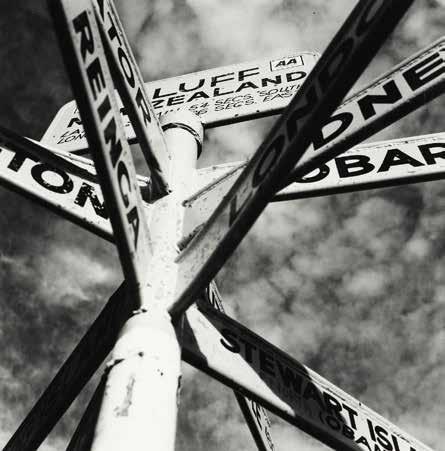
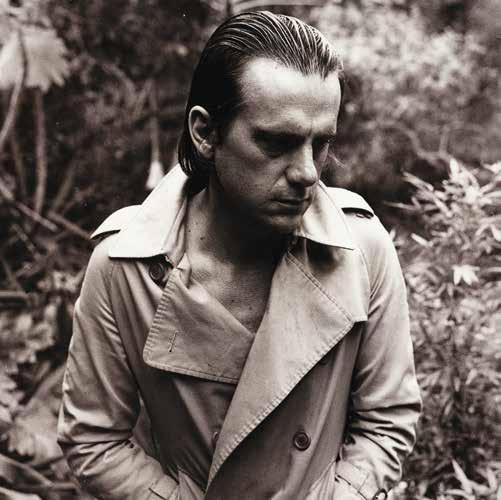
Peter Peryer
Self Portrait (In Overcoat)
gelatin silver print (1977)
235 x 235mm
Provenance: Collection of the artist Murray Grimsdale. Purchased from Webb’s, Auckland, 24 November 2005, Lot No. 31.
Illustrated: ‘The photograph as a portrait of the self’, Art New Zealand, No. 8, 1977–1978.
Collection: An edition of this photograph is held in the collection of Waikato Museum Te Whare Taonga o Waikato.
$6000 – $9000
Bill Culbert
Small Glass Pouring Light gelatin silver print (1983) 415 x 415mm
Illustrated: Ruth Harvey, ‘Fact or Fiction?: The Photographic Illusions of Bill Culbert and Ben Cauchi’, Art New Zealand, No. 199, Winter 2006, p. 54.
Provenance: Collection of Jim Fraser, Auckland.
Purchased from Webb’s, Auckland, November 9, 2006, Lot No. 26. Collection: Editions of this photograph are held in the collection of Auckland Art Gallery Toi o Tāmaki, Queensland Art Gallery/ Gallery of Modern Art, Australia, The Pompidou Centre, France, and The University of Auckland art collection.
$4500 – $7000


Bill Culbert
East Coast, North Island
gelatin silver print (1992)
390 x 390mm
Collection: Editions of this photograph are held in the collection of Queensland Art Gallery/ Gallery of Modern Art, Australia, and The University of Auckland art collection.
$3000 – $5000
Max Dupain (Australia, 1911–1992)
Sunbaker
gelatin silver print (taken in 1937, printed in 1980s) original blind stamp applied verso; authenticated and signed by the artist’s son, Rex Dupain verso 470 x 525mm
Literature: G. Newton, Max Dupain: Photographs 1928–80 (The David Ell Press, Sydney, 1980), p. 64.
Max Dupain’s Australia (Viking Press, Sydney, 1986), p. 104.
H. Ennis, Max Dupain: Photographs (National Gallery of Australia, Canberra, 1991), p. 18.
J. White, S. Smee and M. Cawood, Dupain’s Beaches (Chapter and Verse, Sydney, 2000), p. 69.
J. Annear, The Photograph and Australia (Art Gallery of New South Wales, Sydney, 2015) pp. 40, 50, 104, 294.
Provenance: Private collection. Purchased from Josef Lebovic Gallery, Melbourne Art Fair, 2004.
Grant Kerr Collection. Purchased from Art+Object, Auckland, 26 November, 2015, Lot No. 82.
Collection: Editions of this photograph are held in the collection of the Museum of New Zealand Te Papa Tongarewa, The Art Gallery of Sydney, Australia, National Gallery of Victoria, Australia, National Gallery of Australia, $35 000 – $55 000

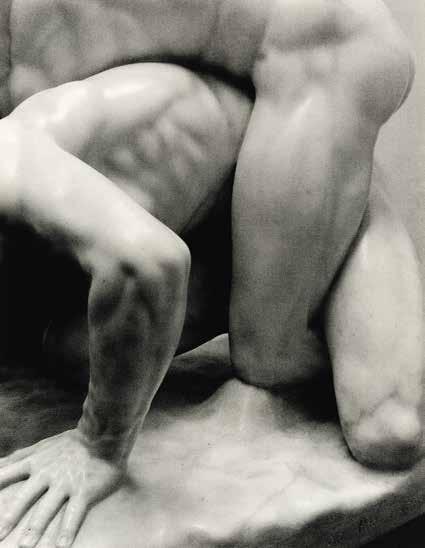
16
Peter Peryer
The Wrestlers
gelatin silver print, 5/5
title inscribed, signed and dated 2002 verso 393 x 302mm
Illustrated: Peter Simpson, Peter Peryer: Photographer (Auckland University Press, 2008), pl. 13.
Collection: An edition of this photograph is held in the Sarjeant Gallery Te Whare o Rehua, Whanganui
$5000 – $8000
Laurence Aberhart
Taranaki from Awatuna, 27 September 2008 gold and selenium toned gelatin silver print title inscribed, signed and dated verso 195 x 245mm
Illustrated: Paul Brobbel, Peter Ireland and others, Laurence Aberhart: Recent Taranaki Photographs (New Plymouth, 2012), cover. Collection: An edition of this photograph is held in the Govett-Brewster Art Gallery, New Plymouth.
$4000 – $6000
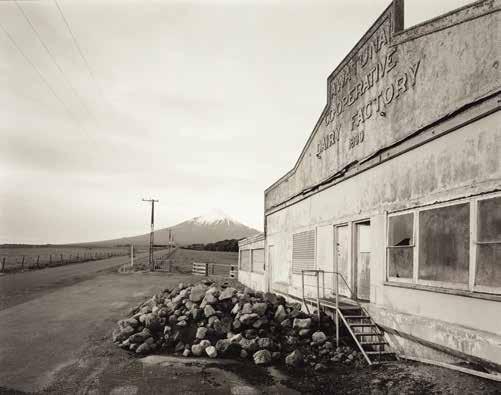
Laurence Aberhart
Taranaki from Rahotu, 1 July 2020 gold and selenium toned gelatin silver print title inscribed, signed and dated verso 195 x 245mm
Literaure: Paul Brobbel, ‘Like Skeletons Betwixt’, Laurence Aberhart: Recent Taranaki Photographs (New Plymouth, 2012).
Collection: An edition of this photograph is held in the Govett-Brewster Art Gallery, New Plymouth.
$4000 – $6000

Laurence Aberhart
Moreporks (Bird Skins Room No. 2), Taranaki St, Wellington, 3 October 1995
gold and selenium toned gelatin silver print title inscribed, signed and dated verso 195 x 245mm
Illustrated: Athol McCredie, New Zealand Photography Collected (Te Papa Press, 2015), p. 343.
Collection: Editions of this photograph are held in the collection of the Museum of New Zealand Te Papa Tongarewa, and The National Gallery of Australia. $4000 – $6000

Laurence Aberhart
Taranaki from Oeo Road, under Moonlight, 27–28 September 1999
gold and selenium toned gelatin silver print title inscribed, signed and dated verso 195 x 245mm
Collection: Editions of this photograph are held in the collection of the Museum of New Zealand Te Papa Tongarewa, Auckland Art Gallery Toi o Tāmaki, The University of Auckland art collection, The Govett-Brewster Gallery, and The Art Gallery of New South Wales, Australia. $4000 – $6000
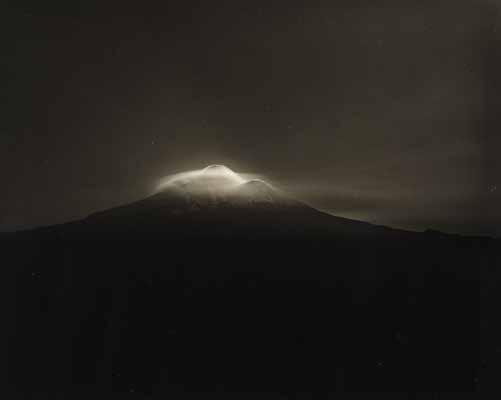
John Johns
Burnt Strand of Corsican Pine, Balmoral Forest, Canterbury
gelatin silver print title inscribed, signed and dated 1955 on artist’s original label affixed verso
247 x 300mm
$4500 – $7000
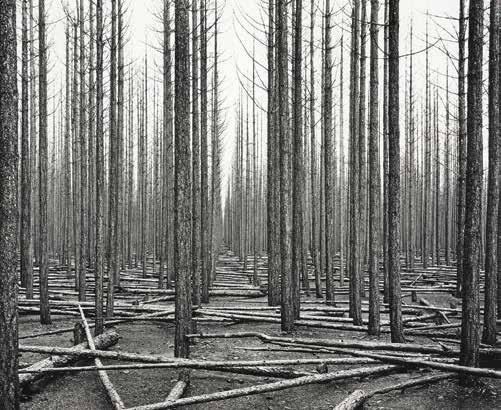
“…he had very zealous eyes—burning eyes... We were like magnets right from the very beginning.”1
In the 1970s and early ‘80s, Peter Peryer forged his reputation with emotionally charged portrayals of his wife, Erika.
These photographs of Erika, half-cloaked in shadow and glaring back at the camera, were only first brought together twenty years later in the exhibition Erika: A Portrait by Peter Peryer, curated by Justin Paton for The Dunedin Public Art Gallery in 2001. The couple had recently separated amicably, and it was Erika who spoke at the floor talks.2 An intimate book accompanied the show, where Emily Perkins aptly encapsulates these evocative portraits:
“This was life outside the humdrum, images that proved what, at sixteen, I suspected and hoped—that there were other ways of being, in this country, than hale and athletic and sporting a grin. The pictures gave off an intense romance, a doomed cinematic aspect, an acceptance of complexity in love...”3
Perkins’ disclosure speaks to the ability of Peryer’s images to remind us that there is always more to the story. Erika – Winter (1979), for example, shows the object of the artist’s affection, broodingly watching his every move. Is this a fickle lovers’ quarrel, or is it their final season? Passionate and mysterious, these photographs raise as many questions about the recipient of that stare as the person who gives it. In a later interview, Erika reveals it was from the cold of that winter day.4 Peryer was fastidious about how his subjects were posed, often putting them into
uncomfortable conditions to avoid the smile we’ve come to expect of a typical portrait.
These photographs might be mistaken as solely reflective of the male gaze. But it was Erika who dressed and played the moody characters of this theatrical account of love, based—only in part— on a true story. Alexa Johnson asserts, “Erika Peryer changes with time, and Peter Peryer’s photographs record the changes. There is a complex relationship between his intuitive planning of photographs and the effect of her personality on his vision.” 5
While he focussed less on portraiture as his career developed, Peryer referred to his photographs of buildings, animals, objects and landscapes as self-portraits in their own right.6 The collaborative approach the couple took with the Erika series sowed the seeds for his quintessential compositions, making them an incredible insight into his practice.
A stalwart for constructing ambiguous but obliquely relatable images, Peryer invites us into these photographs, where undoubtedly, our own relationships lurk. As Erika looks you in the eye, who is it that you see?
1. Erika Parkinson and Peter Peryer, “Partners in Art”, by Patrick Smith. Next Magazine, 1995. Pg70
2. Peter Peryer, quoted by Justin Paton, Erika: A Portrait by Peter Peryer exhibition text https:// citygallery.org.nz/exhibitions/peter-peryer-erikaa-portrait-by-peter-peryer/ accessed 27 Jan 2025
3. Emily Perkins, Erika: A Portrait by Peter Peryer Published 2001 by The Dunedin Public Art Gallery, Dunedin. Pg12
4. Erika Parkinson, Peter Peryer: Portrait of a photographer . Trevor Haysom Enterprise Ltd, 1994, Auckland
5. Alexa Johnson, quoted by Justin Paton, A Portrait by Peter Peryer exhibition text https:// citygallery.org.nz/exhibitions/peter-peryer-erikaa-portrait-by-peter-peryer/ accessed 27 Jan 2025
6. Gregory Burke, Second Nature. Published 1995 by Edition Stemmle AG, Zurich, Switzerland. Pg9
22
Peter Peryer
Erika: Fourteen Portraits fourteen gelatin silver prints dimensions variable
Exhibited: An exhibition devoted to the artist’s portrait series ‘Erika’ was held at Dunedin Public Art Gallery, 20 January – 1 April 2001 (touring).
$80 000 – $120 000


Erika
gelatin silver print title inscribed, signed and dated 1975 on original label affixed verso Illustrated: Justin Paton and Emily Perkins, Erika: A Portrait (Dunedin, 2001), p. 23. 180 x 172mm
Erika with Closed Eyes
gelatin silver print title inscribed, signed and dated 1975 and inscribed II verso Illustrated: Justin Paton and Emily Perkins, Erika: A Portrait (Dunedin, 2001), p. 11. 177 x 173mm


Erika with Knives gelatin silver print (circa. 1977) original John. B Turner Collection label affixed verso Illustrated: Justin Paton and Emily Perkins, Erika: A Portrait (Dunedin, 2001), p. 7. 135 x 135mm
Erika at the Bach gelatin silver print title inscribed, signed and dated 1977 verso 182 x 182mm
Erika (in front of tree)
gelatin silver print title inscribed, signed and dated 1975 verso
177 x 175mm

Erika on Mount Victoria
gelatin silver print title inscribed, signed and dated 1976 verso; original John Leech Gallery label affixed verso Illustrated: Justin Paton and Emily Perkins, Erika: A Portrait (Dunedin, 2001), p. 3. 173 x 173mm

Erika (Woman in Evening Dress)
gelatin silver print
signed and dated 1979 and inscribed Woman in Evening Dress verso
Exhibited: ‘Headlands: Thinking Through New Zealand Art’, Museum of Contemporary Art, Sydney, 1992 (touring New Zealand).
Illustrated: Justin Paton and Emily Perkins, Erika: A Portrait (Dunedin, 2001), p. 1.
442 x 295mm
Erika, Winter
gelatin silver print (1975)
Exhibited: ‘Headlands: Thinking Through New Zealand Art’, Museum of Contemporary Art, Sydney, 1992 (touring New Zealand).
Illustrated: Justin Paton and Emily Perkins, Erika: A Portrait (Dunedin, 2001), p. 5.
410 x 275mm

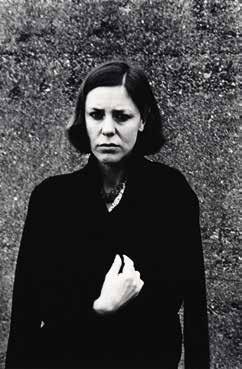
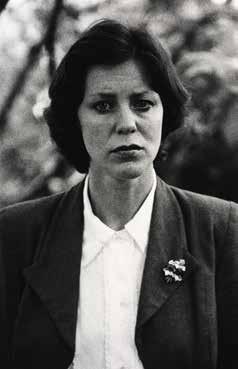

Erika
gelatin silver print (1979)
Illustrated: Justin Paton and Emily Perkins, Erika: A Portrait (Dunedin, 2001), p. 17. 405 x 270mm
Erika
gelatin silver print
title inscribed, signed and dated c. 1979 and inscribed This print made 25/2/88. No final prints made prior to this date.; original ‘Erika: A Portrait by Peter Peryer’ Dunedin Public Art Gallery exhibition label affixed verso 405 x 268mm
Erika gelatin silver print
title inscribed, signed and dated 1977
verso
237 x 235mm

185 x 185mm

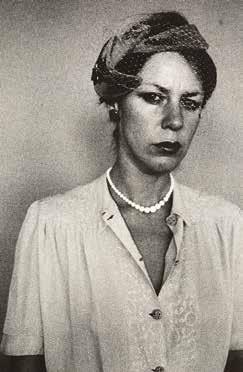
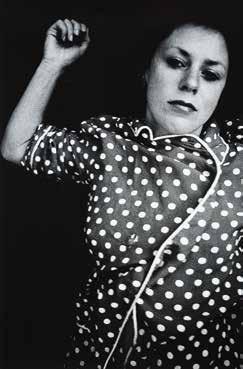
Erika
gelatin silver print (1978)
Illustrated: Justin Paton and Emily Perkins, Erika: A Portrait (Dunedin, 2001), p. 13.
267 x 175mm
Erika
gelatin silver print (1979)
Illustrated: Justin Paton and Emily Perkins, Erika: A Portrait (Dunedin, 2001), p. 9.
305 x 248mm
Here’s a coincidence. Last night I stayed with friends who live in a most interesting house on several acres just out of Alexandra. It was clear that their land, like much of this region, has a severe infestation of rabbits. Rabbits have changed this landscape, nibbling plants so close to the ground that when the wind blows the topsoil is carried away forever. Jazz, their cat, caught a young rabbit last night before our very eyes as we sat, alfresco, sampling some of the wine that the region is famous for. It was a gruesome yet riveting sight. I took out my camera but couldn’t find a photo in it. This morning when I got up, rather late by my standards, there was Jazz with yet another young rabbit laid alongside the previous night’s kill. Again I couldn’t find a photo, I found it hard to watch as she gnawed away at the victim’s neck. Later this afternoon, three friends from Nelson turned up here at Henderson House. As always, it was a delight to see them. As they were leaving, Tim said that a few days ago they had bought something that he thought I could be interested in. Disappearing into their caravan he emerged with this stuffed albino hare. I took one snap of it. It could be a keeper. — Peter Peryer

23
Peter Peryer
European Hare digital print, 4/10 title inscribed, signed and dated 2007/2008 verso 460 x 345mm
Collection: An edition of this photograph is held in the Govett-Brewster Art Gallery, New Plymouth.
$4000 – $7000
Frank Hofmann
Parnell Baths
gelatin silver print (circa 1945)
370 x 296mm
$4500 – $7000
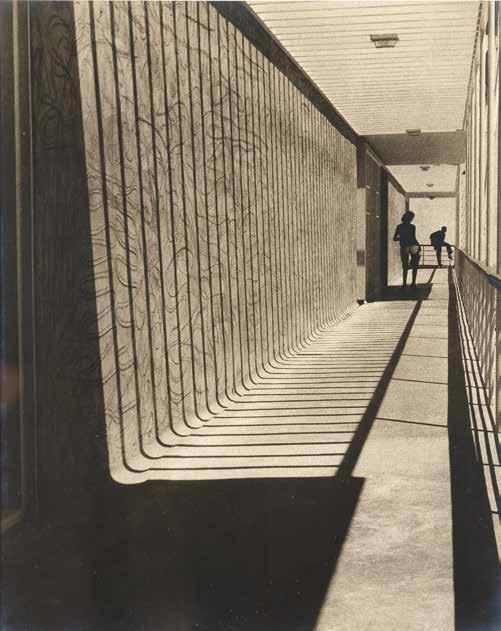
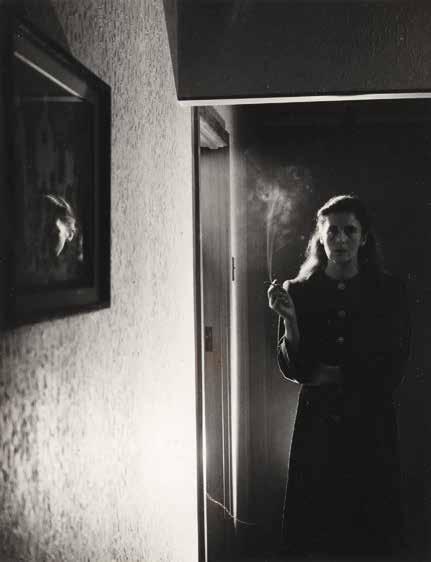
25
Frank Hofmann
Helen Shaw
gelatin silver print (1952) 190 x 155mm
Illustrated: Leonard Bell, Strangers Arrive, Emigrés and the Arts in New Zealand: 1930–1980 (Auckland University Press, 2018), cover.
Collection: An edition of this photograph is held in the collection of the Museum of New Zealand Te Papa Tongarewa. $4000 – $7000

George Chance
The Storm, Lake Wanaka gelatin silver print exposed through a textured screen (circa 1940) title inscribed and signed 215 x 260mm
Illustrated: Athol McCredie, New Zealand
Photography Collected (Te Papa Press, 2015), p. 223.
Collection: Editions of this photograph are held in the collection of the Museum of New Zealand
Te Papa Tongarewa, The Hocken Collection
Te Uare Taoka o Hākena, Dunedin, and The National Gallery of Australia. $2000 – $4000
Yvonne Todd Seriousness
LED print, 3/3 title inscribed, signed and dated April 12 2004
253 x 290mm
Illustrated: Hannah Holm and Lara Strongman, Contemporary New Zealand Photographers (Auckland, 2005), cover. Robert Leonard (ed), Creamy Psychology: Yvonne Todd (Victoria University Press, 2014), unpaginated.
$10 000 – $17 000
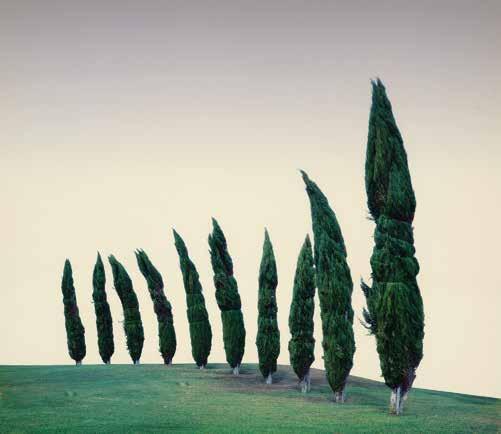
Jae Hoon Lee
One of These Days type C photograph, edition of 8 (2006) 945 x 893mm
$6000 – $9000

Jae Hoon Lee Farm
type C print, edition of 8 1060 x 1190mm
Illustrated: Leonard Bell, Marti Friedlander (Auckland University Press, 2009), cover.
Collection: An edition of this photograph is held in the Auckland Art Gallery Toi o Tāmaki.
$6000 – $10 000
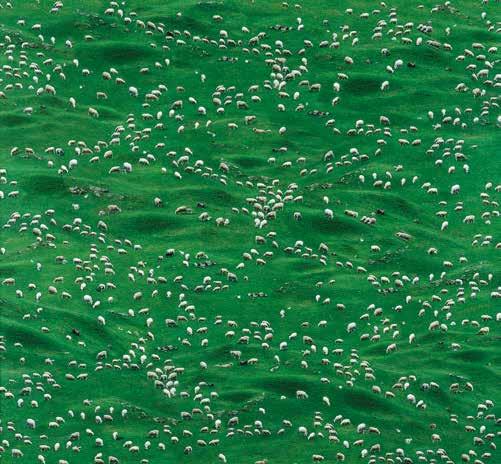
Yvonne Todd
The Menthol Series
LED print, five panels, 2/3 title inscribed, signed and dated 1999 verso 335 x 335mm: each panel
Collection: An edition of this five panel photograph is held in the Govett-Brewster Art Gallery, New Plymouth. $10 000 – $17 000
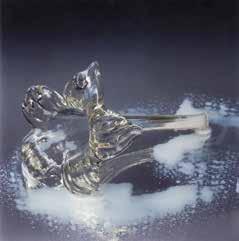



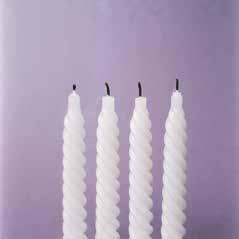
Yvonne Todd Takapuna
lightjet print, 3/3
title inscribed, signed and dated March 15 2009 verso
Provenance: Purchased from Art+Object, Auckland, 4 April 2019, November 2005, Lot No. 59.
505 x 410mm
$4000 – $6000
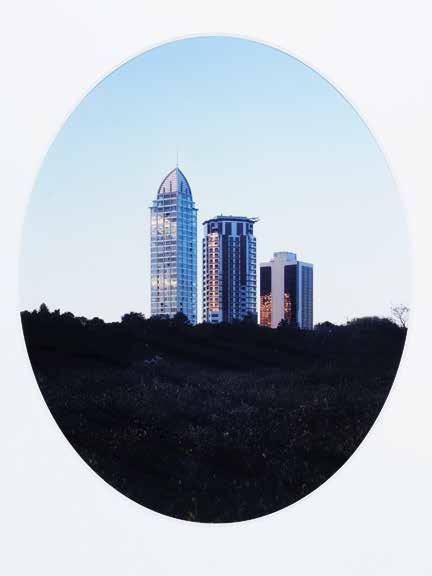
Peter Peryer Stairs, Oamaru digital print, 5/10 signed and dated 2007 and inscribed Newel, Oamaru verso 950 x 730mm
Illustrated: Peter Simpson, Peter Peryer: Photographer (Auckland University Press, 2008), pl. 18.
Collection: An edition of this photograph is held in the collection of the Museum of New Zealand Te Papa Tongarewa. $5000 – $8000

Peter Peryer
Pumpkin, Ebony pigment prints, diptych, 1/15 title inscribed, signed and dated 2010 each verso
305 x 225mm: each panel
$3000 – $5000

Peter Peryer
Denise Naked gelatin silver print (1975) signed with artist’s initials ‘P.P’ 130 x 130mm
Collection: Editions of this photograph are held in the collection of the Museum of New Zealand Te Papa Tongarewa, and Te Manawa Te Papaioea Museum of Art, Science and Heritage, Palmerston North. $5000 – $8000
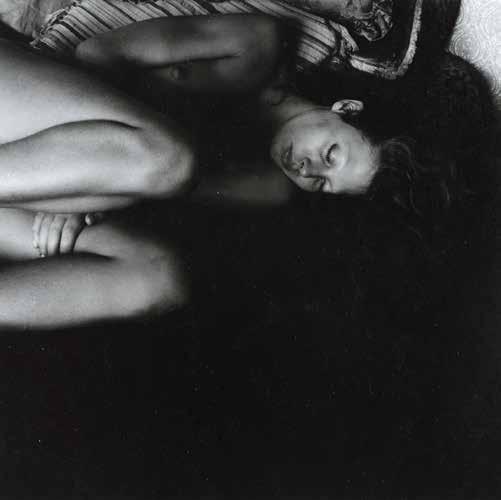

35
Peter Peryer
Easter Saturday gelatin silver print (1979) title inscribed, signed and inscribed Dear Dennis, One for your show (?) verso 265 x 405mm
$5000 – $8000
Peter Peryer
Donna Yuzwalk
gelatin silver print title inscribed, signed and dated 1978 verso
230 x 225mm
Collection: Editions of this photograph are held in the collection of the Museum of New Zealand Te Papa Tongarewa, and Te Manawa Te Papaioea Museum of Art, Science and Heritage, Palmerston North.
$5000 – $8000
Erika Parkinson, to whom I was married at the time, said to me one day that she had met a woman with a very interesting face and perhaps she would be a good subject for a portrait. Upon meeting her I agreed, and Donna Yuzwalk very kindly volunteered to sit for me, although sit seems a rather strange word to use in this case. So here Donna is, standing in front of a river in Kaukapakapa. Why a river? Well, for some reason I was going through a phase where I was hoping to take photos to illustrate some of the poems that I had learnt by heart as a schoolboy. In this case you are looking at ‘The Lady of Shalott’ by Alfred Tennyson. — Peter Peryer
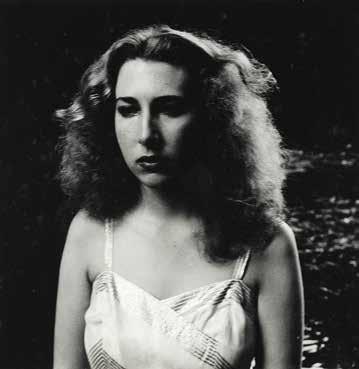
Peter Peryer
Journey to Wellington (from Gone Home) gelatin silver print title inscribed, signed and dated 1975 verso 235 x 235mm
Illustrated: Athol McCredie, New Zealand Photography Collected (Te Papa Press, 2015), p. 308.
Photo-Forum, August/September 1976, cover.
Exhibited: ‘Peter Peryer: An Introduction’, The Dowse Art Gallery, Lower Hutt, 1977–1978.
$5000 – $8000

Ben Cauchi
Insomnia ambrotype
title inscribed, signed and dated 2013 verso
240 x 185mm
$3000 – $5000

Ben Cauchi
Accidental Self Portrait tintype
title inscribed, signed and dated 2006 verso
235 x 195mm
$3000 – $5000
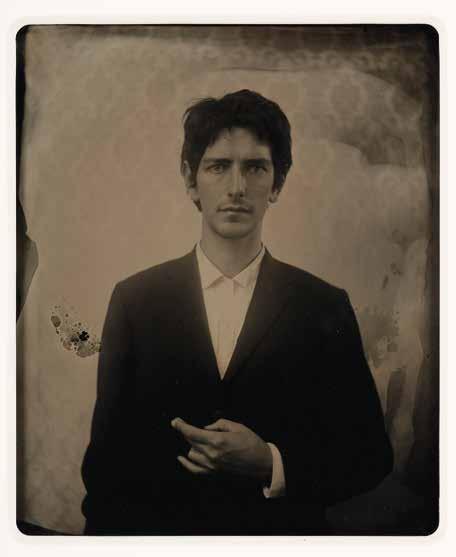
Andrew Ross Approach to the Peter McLeavey Gallery (with the original sign)
gold-toned gelatin silver print title inscribed, signed and dated 20/10/2001
240 x 185mm
$600 – $1000


John B. Turner
Peter McLeavey, The Terrace, Wellington
giclee print
title inscribed signed and dated 1968/printed 2015 on artist’s label affixed verso
360 x 360mm
$800 – $1500
Robin Morrison
Pink Caravan, Harwood, Otago Peninsula (from the series: ‘From the Road, South Island’)
cibachrome photograph (1978) 262 x 387mm
Collection: Editions of this photograph are held in the collection of the Museum of New Zealand Te Papa Tongarewa, and The Metropolitan Museum of Art, New York, USA. $4000 – $6000

Robin Morrison
Robin White with ‘Sam Hunt at the Portobello Pub’ cibachrome photograph
Provenance: Purchased from Webb’s, Auckland, 24 November 2005, Lot No. 138.
275 x 402mm
$2000 – $3000

Theo Schoon
Untitled – Surrealist Composition
gelatin silver print printed from artist’s negative by John B. Turner
275 x 275mm
Provenance: Collection of Les and Milly Paris, Wellington.
Purchased from Art+Object, Auckland 19 September 2012, Lot No. 133. $4000 – $7000
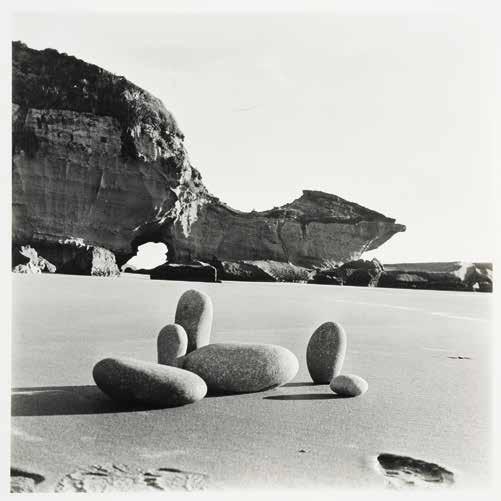
Theo Schoon
Study of a Thermal Stalactite gelatin silver print printed from artist’s negative by John B. Turner
280 x 280mm
Provenance: Collection of Les and Milly Paris, Wellington.
Purchased from Art+Object, Auckland 19 September 2012, Lot No. 134.
$2000 – $3000

Theo Schoon
Waiotapu Mudpool Study
gelatin silver print printed from artist’s negative by John B. Turner
278 x 278mm
Provenance: Collection of Les and Milly Paris, Wellington.
Purchased from Art+Object, Auckland 19 September 2012, Lot No. 135. $2000 – $3000

Marti Friedlander Self Portrait gelatin silver print title inscribed, signed and dated 1961 and inscribed Vintage Image verso
290 x 235mm
Illustrated: Hugo Manson, Marti Friedlander: SelfPortrait (Auckland University Press, 2013), cover.
Leonard Bell, Marti Friedlander (Auckland University Press, 2009), p. 2. $7000 – $12 000
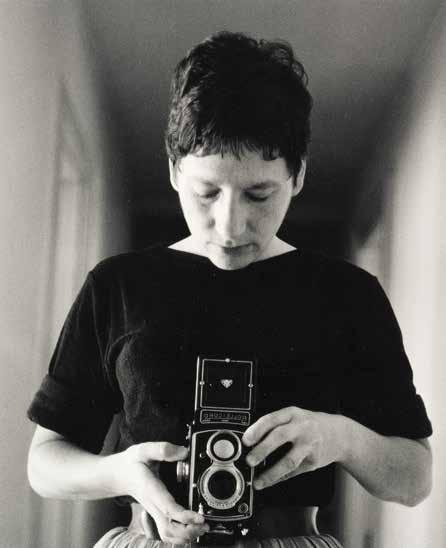
Anne Noble Bed
gelatin silver print (1982)
title inscribed, signed and dated 1996 and inscribed From the series ‘Nighthawk’ 1982 verso
150 x 150mm
$2500 – $4000
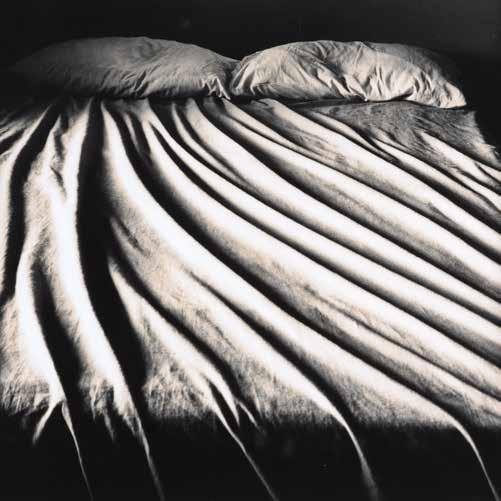
Anne Noble
A Statue of St. Michael the Archangel gelatin silver print (1983)
330 x 220mm
Collection: Editions of this print are held in the collection of Auckland Art Gallery Toi o Tāmaki and Queensland Art Gallery/Gallery of Modern Art.
$2000 – $3000

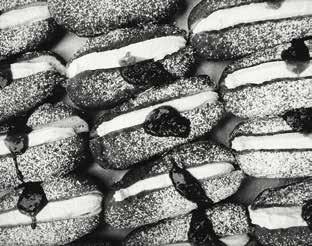

Peter Peryer
Doughnuts, Neenish Tarts, Jam Rolls gelatin silver print, triptych (1983) 265 x 390mm: each Illustrated: Gregory Burke and Peter Weiermair, Second Nature: Peter Peryer, Photographer (Edition Stemmle, Zurich, 1995), pl. 14, 15, 16, back cover (Neenish Tarts). Collection: Edition of these photographs are held in the Sarjeant Gallery Te Whare O Rehua, Whanganui, Auckland Art Gallery Toi o Tāmaki, and the Museum of New Zealand Te Papa Tongarewa $12 000 – $18 000



I can still remember how, when I bought all these tarts, and some doughnuts, and some jam rolls, the owner of the Devonport bakery asked me if I was having a party. This image would be one of the most popular that I have ever taken. — Peter Peryer

51
Peter Peryer
The Grid Series gelatin silver print, triptych (1981) 185 x 280mm: each Collection: Edition of these photographs are held in the Museum of New Zealand Te Papa Tongarewa $8000 – $14 000

Laurence Aberhart
Taranaki, Waitara, 20 June 1982
gold and selenium toned gelatin silver print
title inscribed, signed and dated verso 195 x 245mm
Collection: An edition of this photograph is held in the collection of the Museum of New Zealand Te Papa Tongarewa
$4000 – $6000
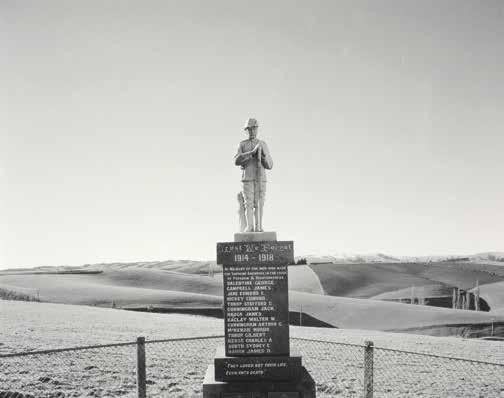
Laurence Aberhart
Dunrobin – Edievale, Otago, 25 June, 2012 gold and selenium toned gelatin silver print title inscribed, signed and dated verso 195 x 245mm
Collection: An edition of this photograph is held in the collection of the Museum of New Zealand Te Papa Tongarewa $4000 – $6000
Laurence Aberhart
Taranaki No. 3, Whanganui 3 July 2011
gold and selenium toned gelatin silver print title inscribed, signed and dated verso 195 x 245mm
Collection: An edition of this photograph is held in the collection of the Art Gallery of New South Wales, Australia.
$4000 – $6000
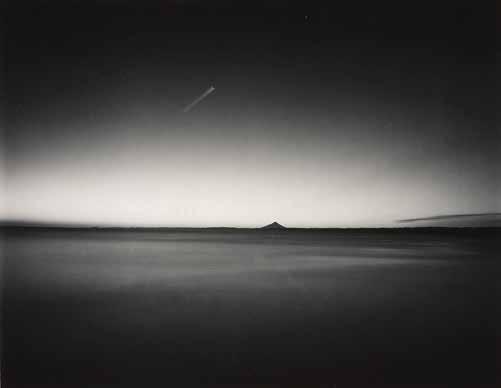
Laurence Aberhart
Te Waiherehere, Koroniti, Whanganui River, May 29 1986
gold and selenium toned gelatin silver print
195 x 245mm
Collection: An edition of this photograph is held in the collection of the Art Gallery of New South Wales, Australia.
$4000 – $6000
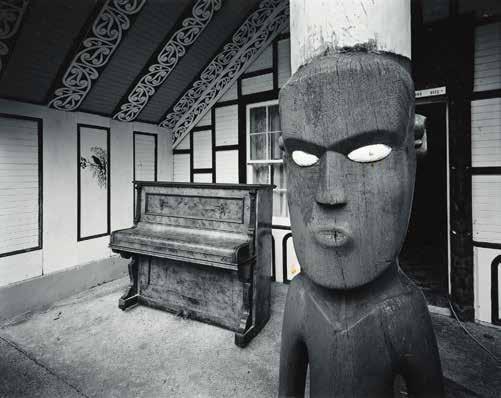
Gavin Hipkins
New Age (Tracks) type C print, 1/3 title inscribed, signed and dated 2007–11 verso
585 x 585mm
$3500 – $5500

Gavin Hipkins
Romance, Red Mount, Varanasi type C print, 1/8
title inscribed, signed and dated 12–97/99 verso 205 x 295mm
Provenance: Collection of Les and Milly Paris, Wellington.
Purchased from Art+Object, Auckland 19 September 2012, Lot No. 127.
$1500 – $2500
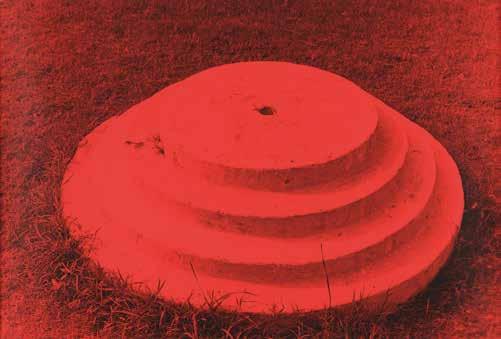
Peter Black Black Dog and Cross cibachrome photograph
165 x 245mm
Collection: An edition of this photograph is held in the collection of the Museum of New Zealand Te Papa Tongarewa.
$2000 – $3000
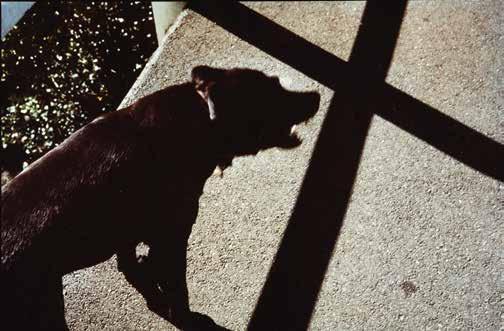
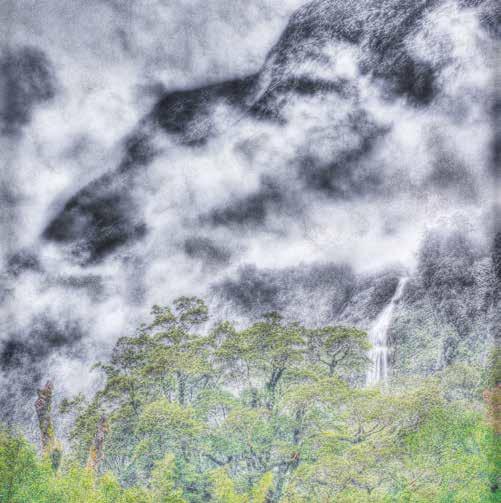
59
Jin Jiangbo (Chinese, 1972–)
Dripping (Variation) pigment inks on rag paper (2015)
Provenance: Purchased from Starkwhite, Auckland
580 x 580mm
$1500 – $2000
Peter Peryer
Camellia
pigment print on Hahnemuhle rag paper, 1/25 title inscribed, signed and dated 2010 verso 211 x 160mm
Collection: An edition of this photograph is held in the collection of the Museum of New Zealand Te Papa Tongarewa. $2000 – $3500
Taranaki has a nip in the air which Himalayan plants such as Camellia and Rhododendron like a lot. In my garden they grow vigorously.
— Peter Peryer

Peter Peryer
Mt Taranaki
gelatin silver print, 15/50
title inscribed, signed and dated Aug 2001 and inscribed Purchased by Grant Kerr, a good friend, 19th October 2001, directly from at 43 Mill Rd, New Plymouth – warmly – P.P verso
113 x 148mm
Collection: Editions of this photograph are held in the collection of the Sarjeant Gallery Te Whare O Rehua, Whanganui and Govett-Brewster Art Gallery, New Plymouth.
$2000 – $3500
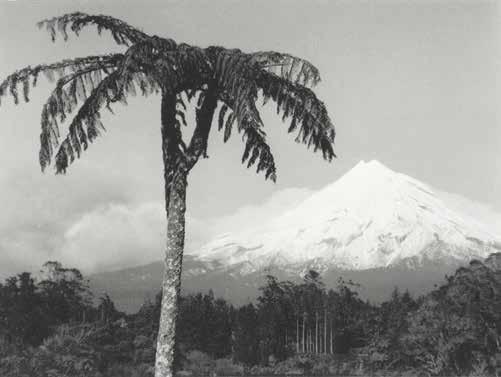

Peter Peryer
South Head, Hokianga pigment print on Ilford Gold paper, 1/25 title inscribed, signed and dated 2017 verso 253 x 190mm
Collection: An edition of this photograph is held in the collection of the Sarjeant Gallery Te Whare o Rehua, Whanganui. $1500 – $2500
Peter Peryer
Street Scene, Oamaru gelatin silver print title inscribed, signed and dated October ’88 verso
305 x 460mm
Illustrated: Gregory Burke and Peter Weiermair, Second Nature: Peter Peryer, Photographer (Edition Stemmle, Zurich, 1995), pl. 28.
Collection: Editions of this photograph are held in the collection of the Auckland Art Gallery Toi o Tāmaki, the Museum of New Zealand Te Papa Tongarewa, and the National Gallery of Victoria, Australia.
$2500 – $4000
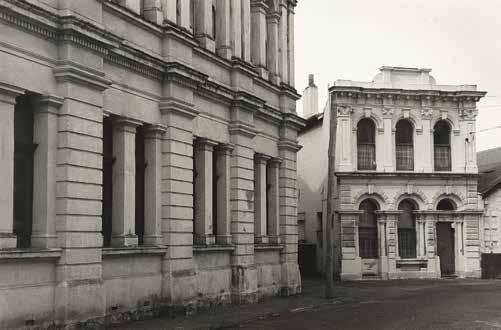
Peter Peryer
Engine Leaving Glen Innes Tunnel gelatin silver print, 1992 title inscribed on original John Leech Gallery label affixed verso
360 x 360mm
Illustrated: Gregory Burke and Peter Weiermair, Second Nature: Peter Peryer, Photographer (Edition Stemmle, Zurich, 1995), pl. 51.
Collection: Editions of this photograph are held in the collection of the Auckland Art Gallery Toi o Tāmaki, Te Manawa Museum of Art, Science and Heritage, Palmerston North, the Museum of New Zealand Te Papa Tongarewa and the Sarjeant Gallery Te Whare o Rehua, Whanganui.
$4000 – $7000

Len Wesney
Moke Lake (Rabbits), Otago, 1971
gelatin silver print
title inscribed, signed and dated and inscribed ex McNamara Gallery exhibition, 2–31 July 2004 verso 205 x 295mm
Exhibited: ‘Len Wesney: 34 Photographs, 1967–1975’, McNamara Gallery, Whanganui, 2–31 July 2004.
$600 – $1000

66
Glenn Busch
Charlie Roughton: Foreman, Metal Foundry (Wellington, 1982)
gelatin silver print
180 x 180mm
Illustrated: Desmond Kelly (ed), Working Men: Glenn Bush (Auckland, 1984), pp. 88–89. 58.
Collection: Editions of this photograph are held in the collection of the Auckland Art Gallery Toi o Tāmaki and the Museum of New Zealand Te Papa Tongarewa.
$1000 – $2000
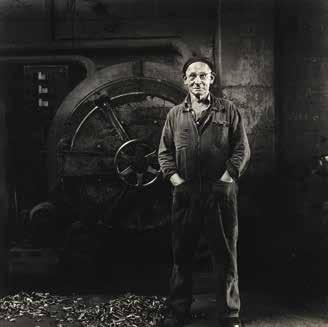
Henry Winkelmann Unknown Vessel on Hauraki Gulf carbon print signed 545 x 385mm
Collection: An edition of this photograph is held in the collection of the Museum of New Zealand Te Papa Tongarewa.
$400 – $700
Eric Lee Johnson Opo, The Dolphin, Opononi gelatin silver print (1955)
240 x 186mm
Collection: An edition of this photograph is held in the collection of the Museum of New Zealand Te Papa Tongarewa.
$600 – $1000
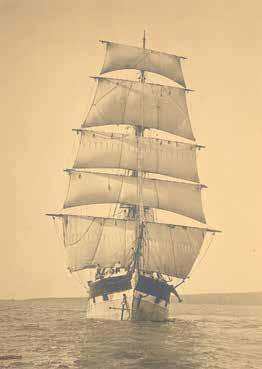

Ans Westra
Inia Te Wiata Funeral, Otaki, 1971
gelatin silver print
220 x 370mm
Collection: Editions of this photograph are held in the collection of the Museum of New Zealand Te Papa Tongarewa, The Dowse Art Museum, Hutt City, and Auckland Art Gallery
Toi o Tāmaki.
$4000 – $7000
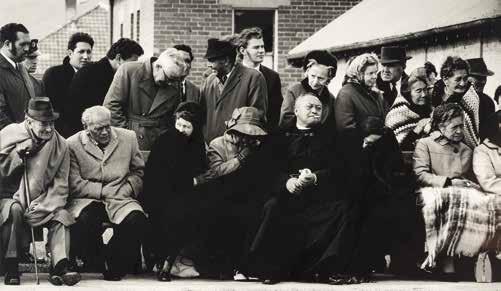

70
Fiona Pardington
Wiriwiri/Tremble, Whanganui Museum
gelatin silver handprint, 3/5
title inscribed, signed and dated 2008 verso 583 x 442mm
Provenance: Purchased from Webb’s, Auckland, 21 February 2012, Lot No. 54.
Collection: An edition of this photograph is held in the collection of Queensland Art Gallery/Gallery of Modern Art, Australia.
$12 000 – $18 000
Ruth Watson
Travelling Chess Set
cibachrome photograph, 2/10 title inscribed, signed and dated 1990 verso; original ‘Paris Collection’ label affixed verso Provenance: Collection of Les and Milly Paris, Wellington.
Purchased from Art+Object, 19 September 2012, Lot No. 187. 385 x 580mm
$1000 – $2000

Megan Jenkinson
Philosophia: Trying to find the Reason in the Codex: Nature cibachrome photograph with collage element
title inscribed, signed and dated 1985; original Les and Milly Paris Collection label affixed verso 198 x 290mm
Provenance: Collection of Les and Milly Paris, Wellington. Purchased from Art+Object, Auckland 19 September 2012, Lot No. 128.
$1000 – $2000
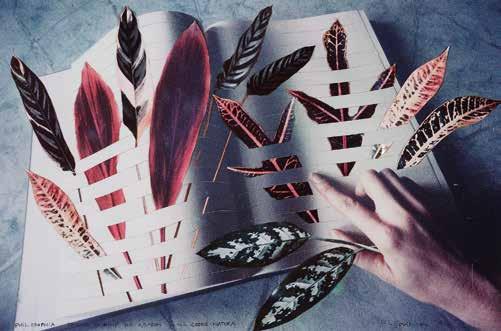
Marie Shannon
The Rat in the Lounge gelatin silver print, three parts (adjoining), 4/10 title inscribed, signed and dated Nov 1985 verso; original Les and Milly Paris Collection label affixed verso 195 x 290mml
Illustrated: Mary Barr (ed), Content/Context: A Survey of Recent New Zealand Art (Wellington, 1986), p. 79.
Exhibited: ‘Content/Context: A Survey of Recent New Zealand Art’, National Art Gallery, Wellington, 19 September 1986–1 February 1987.
‘Marie Shannon: Rooms found only in the home’, Dunedin Public Art Gallery, 22 July – 23 October 2017.
Provenance: Collection of Les and Milly Paris, Wellington.
Purchased from Art+Object, Auckland 19 September 2018, Lot No. 15.
Collection: Editions of this photograph are held in the collection of the Museum of New Zealand Te Papa Tongarewa, and Christchurch Art Gallery Te Puna o Waihetū. $2000 – $3500


74
Peter Peryer
Alligator gelatin silver print (1988)
300 x 457mm
Illustrated: Gregory Burke and Peter Weiermair, Second Nature: Peter Peryer, Photographer (Edition Stemmle, Zurich, 1995), pl. 32.
Collection: Editions of this photograph are held in the Sarjeant Gallery Te Whare o Rehua, Whanganui, the National Gallery of Victoria, and the Museum of New Zealand Te Papa Tongarewa.
$4000 – $7000
Peter Peryer
Two Goats
gelatin silver print, edition of 10 (2007) 380 x 510mm
Illustrated: Peter Simpson, Peter Peryer: Photographer (Auckland University Press, 2008), pl. 34.
Collection: An edition of this photograph is held in the collection of the Museum of New Zealand Te Papa Tongarewa.
$3000 – $5000

For the second time in a month, I have been inspired by something that I have seen in a fish shop. A new business, recently opened in New Plymouth, is selling fish caught by their own boat, and sold straight to the public. Most days their boat arrives around 2 pm. Today while there to buy a whole fish for the BBQ tonight, I noticed they had an octopus for sale. It had been arranged so that one of its eyes was in the middle looking straight at customers. I felt some sorrow for the creature, finding it hard not to think of how it must have died in fear.
All the same I felt that if I was to have clear access to it… I need to perhaps buy a whole octopus, arrange it myself, and see if I can do a much improved version of the above image. Or maybe I could pay the shop to give me freer access to it. I’m not sure. — Peter Peryer
Peter Peryer
Octopus gelatin silver print title inscribed, signed and dated 1985 on artist’s label affixed verso 355 x 335mm
Illustrated: Mary Barr (ed), Content/Context: A Survey of Recent New Zealand Art (Wellington, 1986), p. 71.
Exhibited: ‘Content/Context: A Survey of Recent New Zealand Art’, National Art Gallery, Wellington, 19 September 1986–1 February 1987.
Collection: An edition of this photograph is held in the Sarjeant Gallery Te Whare o Rehua, Whanganui.
$4000 – $7000
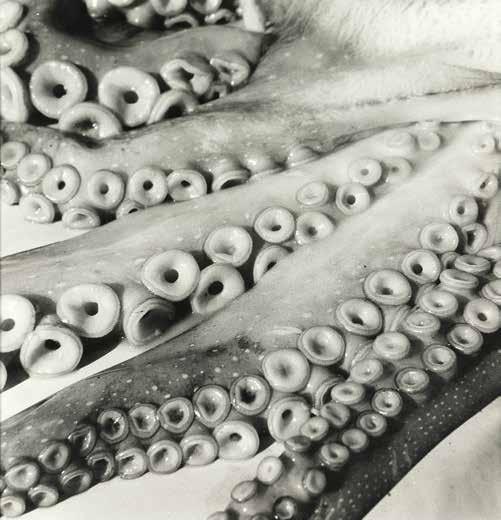

77
Peter Peryer
The Wind at Whenuapai gelatin silver print, 24/30 title inscribed, signed and dated 1998 verso 107 x 153mm
Illustrated: Peter Simpson, Peter Peryer: Photographer (Auckland University Press, 2008), pl. 60.
Collection: An edition of this photograph is held in the collection of the Museum of New Zealand Te Papa Tongarewa. $3000 – $5000

78
Peter Peryer
Jervois Road, Herne Bay
gelatin silver print
title inscribed, signed and dated 1/5/00 verso
180 x 178mm
Illustrated: Peter Simpson, Peter Peryer: Photographer (Auckland University Press, 2008), pl. 74.
$3000 – $5000
I took this photo in about 1989. It’s Jervois Road in Auckland, where Ponsonby meets Herne Bay, where Curran Street leads to the Harbour Bridge. Although it wasn’t the reason I took the photo, I do notice the shape of Jervois Rd reminds me of NZ. The neatness of the rows of houses is also very interesting to me. Twice I chartered a small plane, with pilot, to fly me over some parts of Auckland. By having him fly as slowly as possible, and by bracing myself against the wind I was able to put my camera out the window and take some images. I don’t think that I’ve ever published this one. At the time I thought how much they reminded me of the Whites Aviation images that were such a feature of walls when I was young. — Peter Peryer
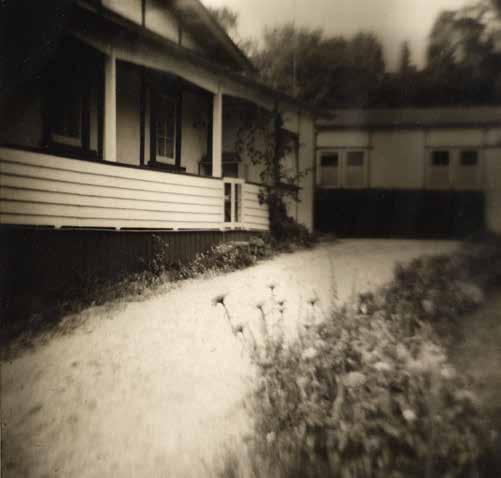
Peter Peryer House, Cambells Bay gelatin silver print (1975) 170 x 170mm
Illustrated: Photo-Forum, August/September 1978, p. 14. $6000 – $10 000
Peter Peryer
Beni
gelatin silver print
title inscribed, signed and dated 1976
175 x 173mm
$5000 – $8000
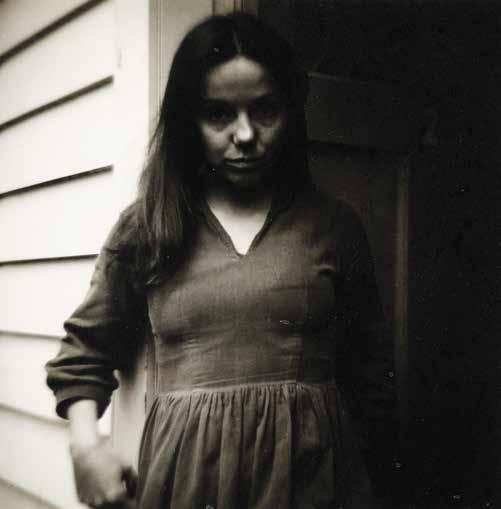
For some years I had the idea that a chicken carcass would be an interesting object to photograph. Eventually I bought this organic unfrozen one for photographing first and editing second. I screwed a brass hook into an outside wall and attached the body, believing it to be important to have outside light falling on it whilst it was vertical, rather than lying flat on a table or dish. Soon, I would like to photograph chicken entrails, not to foretell the future i would hasten to add, but because i just like the shapes and patterns. As a country boy, one of my regular chores was to kill chickens for the evening table, so I was brought up on the sight, and just as vividly, on the smells. — Peter Peryer

Peter Peryer
Headless Chicken gelatin silver print, edition of 15 (1995)
500 x 404mm
Provenance: Purchased from the artist. Collection: An edition of this photograph is held in the University of Auckland Art collection and the Dunedin Public Art Gallery collection.
$4000 – $6000

Collection: An edition of this photograph is held in the collection of Auckland Art Gallery Toi o Tāmaki.
$1200 – $2000
Please note: it is assumed that all bidders at auction have read and agreed to the conditions described on this page. Art+Object directors are available during the auction viewing to clarify any questions you may have.
1. REGISTRATION: Only registered bidders may bid at auction. You are required to complete a bidding card or absentee bidding form prior to the auction giving your correct name, address and telephone contact and supplementary information such as email addresses that you may wish to supply to Art+Object.
2. BIDDING: The highest bidder will be the purchaser subject to the auctioneer accepting the winning bid and any vendor’s reserve having been reached. The auctioneer has the right to refuse any bid. If this takes place or in the event of a dispute the auctioneer may call for bids at the previous lowest bid and proceed from this point. Bids advance at sums decreed by the auctioneer unless signaled otherwise by the auctioneer. No bids may be retracted. The auctioneer retains the right to bid on behalf of the vendor up to the reserve figure.
3. RESERVE: Lots are offered and sold subject to the vendor’s reserve price being met.
4. LOTS OFFERED AND SOLD AS DESCRIBED AND VIEWED: Art+Object makes all attempts to accurately describe and catalogue lots offered for sale. Notwithstanding this neither the vendor nor Art+Object accepts any liability for errors of description or faults and imperfections whether described in writing or verbally. This applies to questions of authenticity and quality of the item. Buyers are deemed to have inspected the item thoroughly and proceed on their own judgment. The act of bidding is agreed by the buyer to be an indication that they are satisfied on all counts regarding condition and authenticity.
5. BUYERS PREMIUM: The purchaser by bidding acknowledges their acceptance of a buyers premium of 19% + GST to be added to the hammer price in the event of a successful sale at auction.
6. ART+OBJECT IS AN AGENT FOR A VENDOR: A+O has the right to conduct the sale of an item on behalf of a vendor. This may include withdrawing an item from sale for any reason.
7. PAYMENT: Successful bidders are required to make full payment immediately post sale – being either the day of the sale or the following day. If for any reason payment is delayed then a 20% deposit is required immediately and the balance to 100% required within 3 working days of the sale date. We accept payment via Eftpos, cash (under $5000.00) and direct credit. Visa and MasterCard credit cards are accepted, however a surcharge of 2.5% will be added. Payments over $10 000.00 must be made by direct credit to our bank account. Our bank details for deposits are 12-3107-0062934-00. Please use your buyer number as transaction reference. Please refer to point 7 of the Conditions of Sale in the catalogue for a detailed description of payment terms.
8. FAILURE TO MAKE PAYMENT: If a purchaser fails to make payment as outlined in point 7 above Art+Object may without any advice to the purchaser exercise its right to: a) rescind or stop the sale, b) re offer the lot for sale to an underbidder or at auction. Art+Object reserves the right to pursue the purchaser for any difference in sale proceeds if this course of action is chosen, c) to pursue legal remedy for breach of contract.
Purchased items are to be removed from Art+Object premises immediately after payment or clearance of cheques. Absentee bidders must make provision for the uplifting of purchased items (see instructions on the facing page).
The act of bidding means all bidders acknowledge that they are personally responsible for payment if they are the successful bidder. This includes all registered absentee or telephone bidders. Bidders acting as an agent for a third party must obtain written authority from Art+Object and provide written instructions from any represented party and their express commitment to pay all funds relating to a successful bid by their nominated agent.
When the highest bid is below the vendor’s reserve this work may be announced by the auctioneer as sold ‘subject to vendor’s authority’ or some similar phrase. The effect of this announcement is to signify that the highest bidder will be the purchaser at the bid price if the vendor accepts this price. If this highest bid is accepted then the purchaser has entered a contract to purchase the item at the bid price plus any relevant buyers premium.
The following information does not form part of the conditions of sale, however buyers, particularly first time bidders are recommended to read these notes.
A.
AT
Please ensure your instructions to the auctioneer are clear and easily understood. It is well to understand that during a busy sale with multiple bidders the auctioneer may not be able to see all bids at all times. It is recommended that you raise your bidding number clearly and without hesitation. If your bid is made in error or you have misunderstood the bidding level please advise the auctioneer immediately of your error – prior to the hammer falling. Please note that if you have made a bid and the hammer has fallen and you are the highest bidder you have entered a binding contract to purchase an item at the bid price. New bidders in particular are advised to make themselves known to the sale auctioneer who will assist you with any questions about the conduct of the auction.
B. ABSENTEE BIDDING:
Art+Object welcomes absentee bids once the necessary authority has been completed and lodged with Art+Object. A+O will do all it can to ensure bids are lodged on your behalf but accepts no liability for failure to carry out these bids. See the Absentee bidding form in this catalogue for information on lodging absentee bids. These are accepted up to 2 hours prior to the published auction commencement.
C. TELEPHONE
The same conditions apply to telephone bids. It is highly preferable to bid over a landline as the vagaries of cellphone connections may result in disappointment. You will be telephoned prior to your indicated lot arising in the catalogue order. If the phone is engaged or connection impossible the sale will proceed without your bidding. At times during an auction the bidding can be
frenetic so you need to be sure you give clear instructions to the person executing your bids. The auctioneer will endeavour to cater to the requirements of phone bidders but cannot wait for a phone bid so your prompt participation is requested.
D.
All estimates in this catalogue are in New Zealand dollars. The amount to be paid by successful bidders on the payment date is the New Zealand dollar amount stated on the purchaser invoice. Exchange rate variations are at the risk of the purchaser.
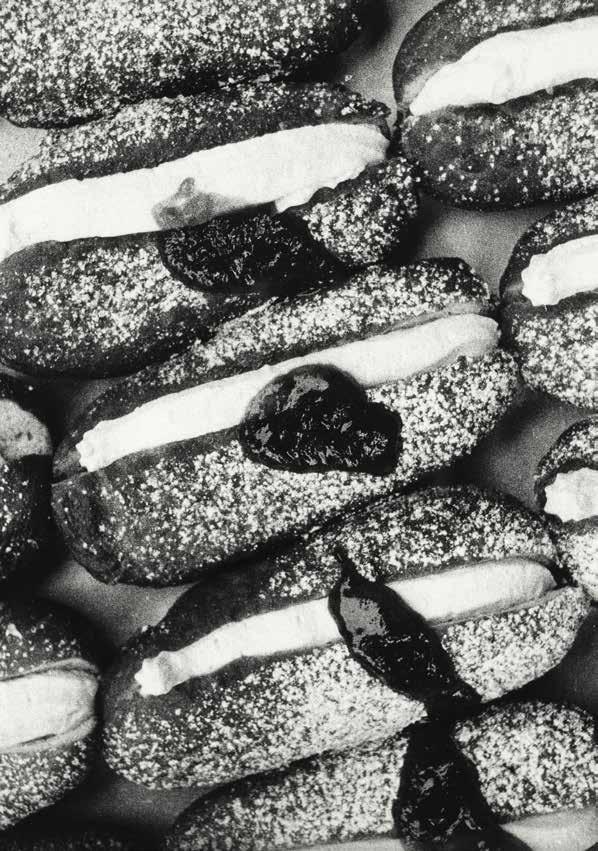
Auction No. 203
The world is a strange place — The Grant Kerr Collection of Photography Auction: Tuesday 4 March 2025 at 6.00pm
This completed and signed form authorises Art+Object to bid on my behalf at the above mentioned auction for the following lots up to prices indicated below. These bids are to be executed at the lowest price levels possible.
I understand that if successful I will purchase the lot or lots at or below the prices listed on this form and the listed buyers premium for this sale (19%) and GST on the buyers premium. I warrant also that I have read and understood and agree to comply with the conditions of sale as printed in the catalogue.
PAYMENT AND DELIVERY: Art+Object will advise me as soon as is practical that I am the successful bidder of the lot or lots described above.
I agree to pay immediately on receipt of this advice. Payment will be by Eftpos, cash (under $5000.00) or direct credit. I understand that there is a 2.5% surcharge for payment by Visa or MasterCard credit cards. I understand that payments over $10 000.00 must be
made by direct credit to Art+Object’s bank account as shown on the invoice.
I will arrange for collection or dispatch of my purchases. If Art+Object is instructed by me to arrange for packing and dispatch of goods I agree to pay any costs incurred by Art+Object. Note: Art+Object requests that these shipping arrangements are made prior to the auction date to ensure prompt delivery processing.
Please indicate as appropriate: PH ONE BID A BSENTEE BID
FIRST NAME:
ADDRESS:
HOME PHONE:
BUS. PHONE:
Signed as agreed:
SURNAME:
MOBILE:
EMAIL:
To register for Absentee Bidding this form must be lodged with Art+Object by 2pm on the day of the published sale time in one of three ways:
1. Email a printed, signed and scanned form to Art+Object: info@artandobject.co.nz
2. Fax a completed form to Art+Object: +64 9 354 4645
3. Post a form to Art+Object, PO Box 68345 Victoria Street West, Auckland 1142, New Zealand
